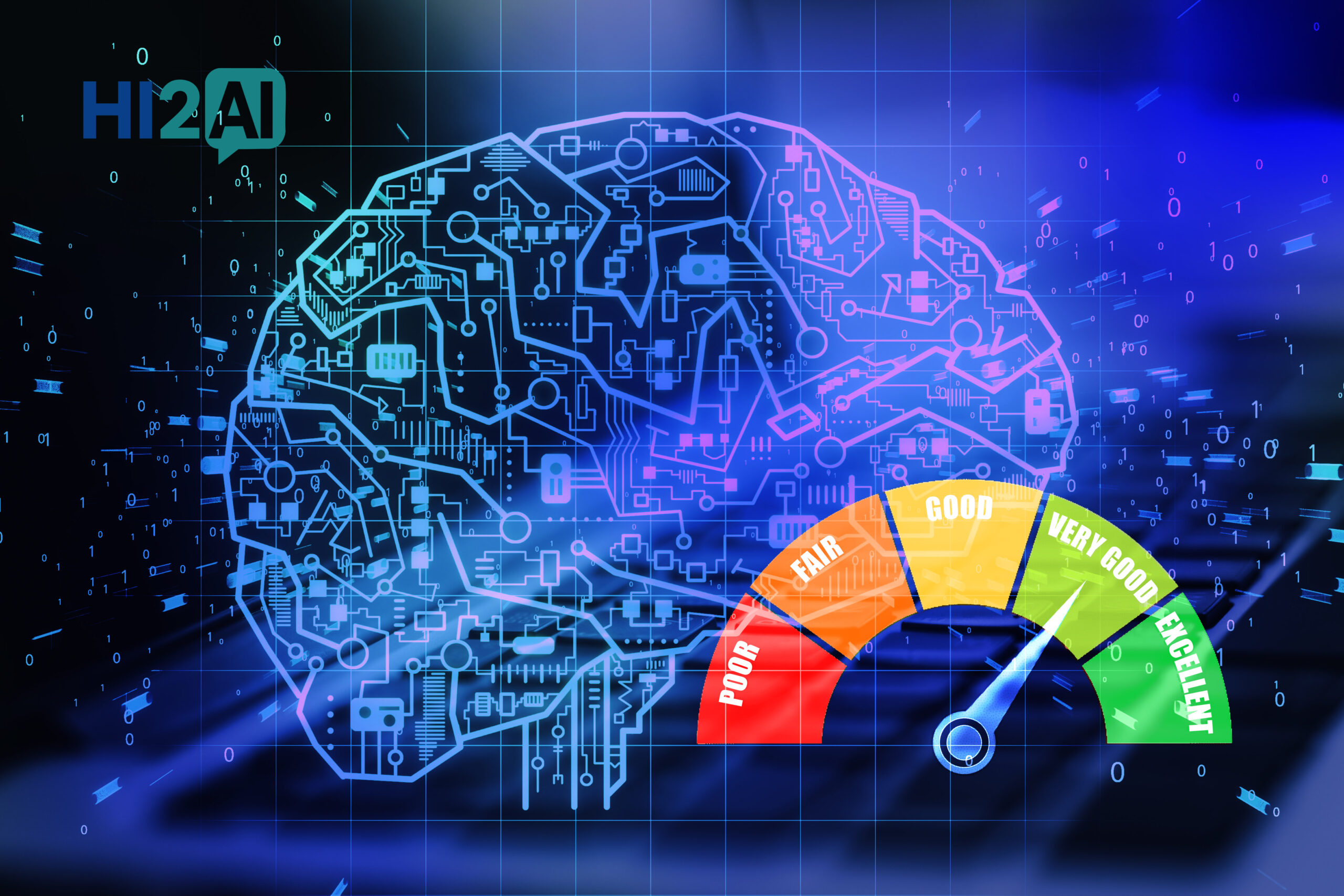
Introduction
As with the other areas of financial services, it is no surprise that Artificial Intelligence (AI) is redefining credit modelling, credit scoring, credit underwriting, and credit risk assessment. By leveraging deep learning, behavioral analytics, and alternative data sources, AI models now drive faster, more personalized lending decisions across financial institutions, local and global.
With every development comes new risk. As sophistication of AI–Driven Credit Systems grows, so too does the sophistication of adversaries seeking to manipulate them. Fraudsters are exploiting systemic weaknesses such as model opacity, feature manipulation, and synthetic identities to secure fraudulent loans or distort credit ratings. These actions result in fabricating financial credibility of people seeking credit. To whom are the Institutions really lending? This is a mute question that needs to be answered with trust and reliability. Sounds familiar?
The Trick
With AI becoming the mainstay in credit management, temporary movements and fraudulent practices are seen to be typical approaches to trick AI–Driven Credit Systems. Temporary boosts in account balances (to increase borrower stability), liquidating microloans (signalling improved borrower behaviour) and fraudulently creating synthetic identities (populations created to statistically look like low–risk borrowers) are known red flags.
Repercussions
These frauds trick AI–Driven Credit models to approve high–risk or entirely fraudulent loans, exposing the lending institutions to major financial and reputational losses. Impacts include:
- Financial Exposure. Large–scale loan defaults and revenue leakage from mispriced risk.
- Regulatory Breach. Violations of fair lending practices and regulatory guidelines for model risk governance (e.g., OSFI E–23).
- Reputational Damage. Loss of customer and investor trust due to perceived AI irresponsibility.
- Operational Inefficiency. Increased investigation costs for post–loan recovery and forensics.
- Data Integrity Erosion. Models trained on tampered or synthetic data deteriorate in accuracy over time.
Industry Reactions
In its H2 2024 State of Omnichannel Fraud Report, credit reporting agency TransUnion reported that synthetic identities reached an all–time high at the end of the first half of 2024 among accounts opened by U.S. lenders for auto loans, bank credit cards, retail credit cards and unsecured personal loans. The Report indicates that the corresponding exposure to these lenders stands at a staggering USD 3.2 Billion. In another instance, a top U.S. bank identified 30,000 fake or manipulated accounts, demonstrating how adversarial attacks exploit weaknesses in model explainability and feature weighting. The Federal Reserve Bank of Boston makes an equally disturbing observation, “Synthetic identity fraud is a fast–growing and costly type of financial fraud, and its threat is increasing – thanks to generative AI”.
Undoubtedly, these echo the questionable state of machine learning in fraud detection that underscores a mute point: most AI models remain vulnerable to feature manipulation and training data bias.
A Glaring Cybersecurity Risk as well….
From a Cybersecurity perspective, risks of AI–Driven Credit Systems are classic cases of data manipulation leading to model evasion. Why? Even technically sound AI models may lack contextual integrity checks and cross–variable correlation validation. This will impact the AI System’s foundational input layers and falls perfectly in the lap of “Integrity” violations among the “Confidentiality”, “Integrity” and “Availability” objectives of Cybersecurity. These illustrate:
- Lack of model explainability. AI–Driven Credit Systems features are not regularly analyzed and reviewed for anomalies.
- Over–reliance on static patterns. AI–Driven Credit Systems lack dynamic recalibration mechanisms to detect “too–perfect” credit behavior.
- Absence of continuous model audit. No automated feedback loop exists to detect sudden shifts in applicant data points or input variance.
Controls for managing AI Risks in Credit Scoring
As Banks, Credit Unions and other Financial Institutions modernize their credit decisioning processes, a shift from traditional rule–based models to AI–driven ones presents both opportunity and systemic risk. The transition must balance innovation, interpretability, fairness, and compliance to prevent financial, regulatory, and reputational exposure. While not exhaustive, a few control approaches are listed below:
- Financial Institutions can benefit from adopting hybrid AI models that combine rule–based scoring with machine learning insights. This ensures a controlled, explainable progression while allowing continuous benchmarking between old and new models. Industry standard references that can help in this context include:

- Financial Institutions should explore establishing a Model Risk Management (MRM) framework aligned with regulatory expectations such as OSFI B–23. This will help ensure a rigorous pre–deployment testing and ongoing validation in AI systems to avoid unintentional discrimination or manipulation. Industry standard references that can help in this context include:

- Financial Institutions should trace data lineage from source to model ingestion, employing checks along the way for data bias, quality, and timeliness. The adage, “Reliability is only as strong as its weakest link” is apt! Further, Financial Institutions should maintain transparency of the process through data versioning and provenance tracking. Industry standard references that can help in this context include:

- Financial Institutions should establish a cross–functional AI Ethics Committee (or similar) that is responsible and accountable to approve new AI scoring models, oversee fairness metrics, and ensure compliance with privacy and consumer protection laws (e.g., PIPEDA, PIPA). This governance function should ensure institutional alignment between compliance, technology, and social responsibility. Industry standard references that can help in this context include:

- Financial Institutions should deploy dashboards and continuous feedback mechanisms that track model performance, fairness, data drift, and customer complaints. These real–time alerts and notifications can signal anomalies in credit decision patterns or systemic bias before they escalate into compliance issues. Industry standard references that can help in this context include:

- As regulated entities, Financial Institutions should proactively prepare and implement AI governance and risk reporting mechanisms to address the needs of regulators, auditors, and other stakeholders. Further, Financial Institutions should elevate their internal audit function to address the evolving needs of auditing AI systems. Few topics for reporting include model risk exposure, validation outcomes, and mitigation steps. These measures will help Financial Institutions meet the expectations of regulators like OSFI and reinforce public trust in AI–driven lending practices. Industry standard references that can help in this context include:

The Future of trustworthy AI–Driven Credit
Undoubtedly, inclusion of AI in credit practices will be the hallmark of the lending business in the next decade. Financial Institutions should evolve responsibly in this business and use Ai not just as an automation and convenience tool but wrap accountability and responsibility in the process. To ensure sustainable, trustworthy AI–Driven Credit systems, Financial Institutions should anchor their AI–Driven Credit transformations on five imperatives:
- Embed strong governance and risk management practices across the AI model lifecycle.
- Continuously monitor AI behavior for bias, drift, hallucination, and manipulation.
- Adopt explainability–first approaches to credit scoring.
- Strengthen human–AI relationships, collaboration, and oversight.
- Align AI risk management practices with industry accepted AI frameworks. A few examples are included in this Article.
Closing Thoughts
When executed responsibly, AI–Driven Credit scoring can deliver several advantages including reduced credit decision time, enhanced fraud detection accuracy, improved portfolio diversity and inclusion outcomes, and strengthened consumer trust through explainable decisions. However, the transformation demands heightened risk governance, control integration, and ethical vigilance to ensure innovation does not compromise responsibility, accountability and ownership. Ultimately, the human touch in using AI–Driven Credit systems is non–negotiable. Let us remember that Credit decisions impact not just one or two individuals, but shape communities and economic growth.
- What is your view on AI–Driven Credit scoring?
- Is (are) there any stage(s) in the Credit / Lending lifecycle you would rather leave to the “human touch” and keep AI away? Why?
About This Article:
Published as part of Financial Technology Frontiers (FTF)’s Hi2AI Series, this Article explores how AI is redefining the Credit function: enhancing speed, driving insight–led decision–making, and enabling Financial Institutions to adapt and change modern credit practices with confidence. Authored by Narasimham Nittala, this Article examines the inclusion and risks of AI in Credit scoring, offering a balanced view of innovation and risk. Written in an accessible, practitioner–focused format, it aims to raise awareness about responsible AI adoption across Financial Institutions.
FTF believes that financial service providers, Fintech entities, consulting firms, and technology companies can all benefit from reflecting on the perspectives shared here and consider how their own approaches to AI Risk Management can evolve. Practitioners in other industries are equally encouraged to adapt these insights to their unique contexts.
About Hi2AI
Hi2AI is FTF’s AI ecosystem For Financial Services. Hi2AI is a trusted community shaping the future of Artificial Intelligence in Financial Services by driving responsible innovation, influencing policy with regulators, and crafting future standards that ensure growth, resilience, and trust across the global financial ecosystem. Hi2AI exists to accelerate the responsible adoption of AI across the global financial ecosystem through:
- AI–Driven Industry Collaboration.
- Ecosystem Connection & Innovation.
About Financial Technology Frontiers
Financial Technology Frontiers (FTF) is a global media–led fintech platform dedicated to building and nurturing innovation ecosystems. We bring together thought leaders, financial institutions, fintech disruptors, and technology pioneers to drive meaningful change in the financial services industry.




